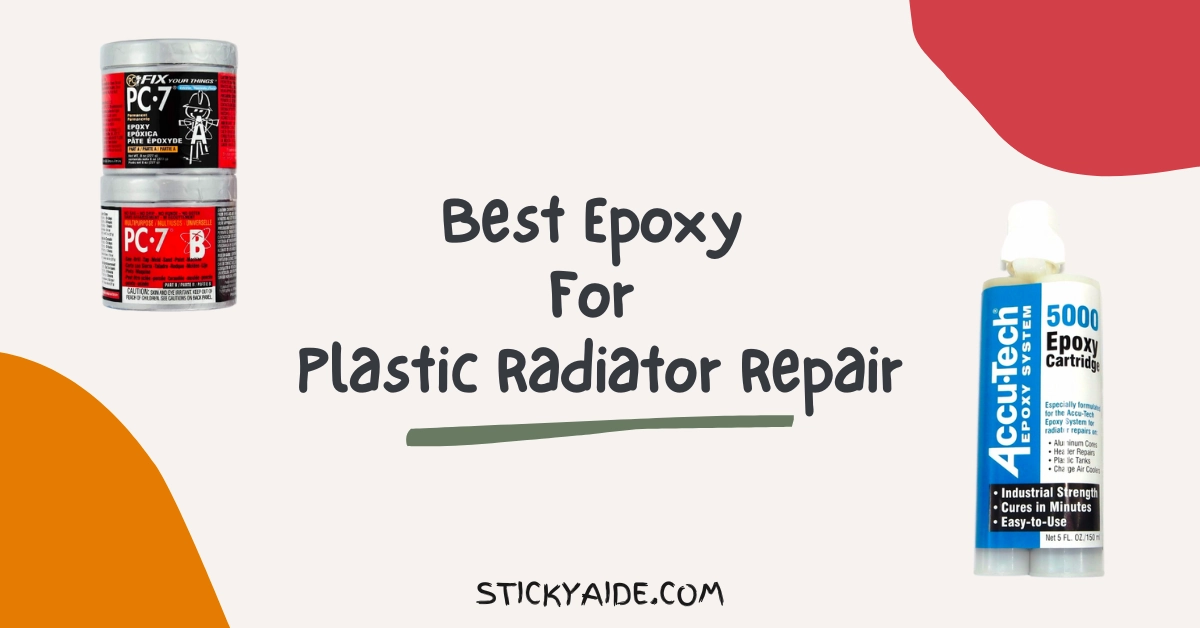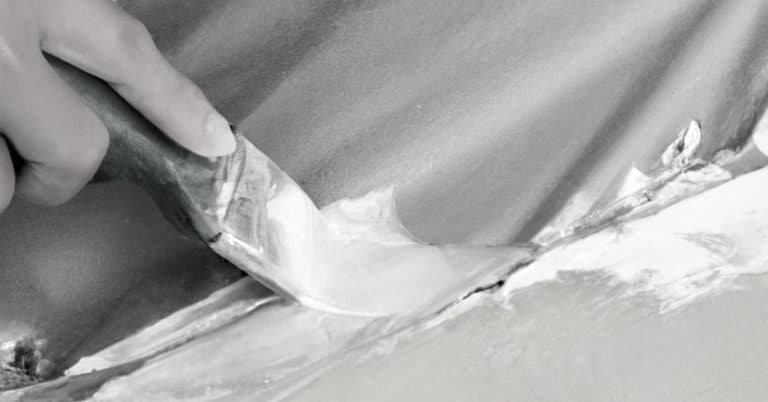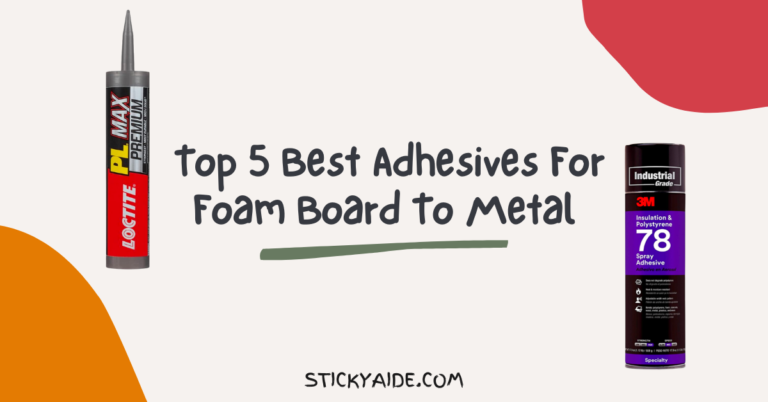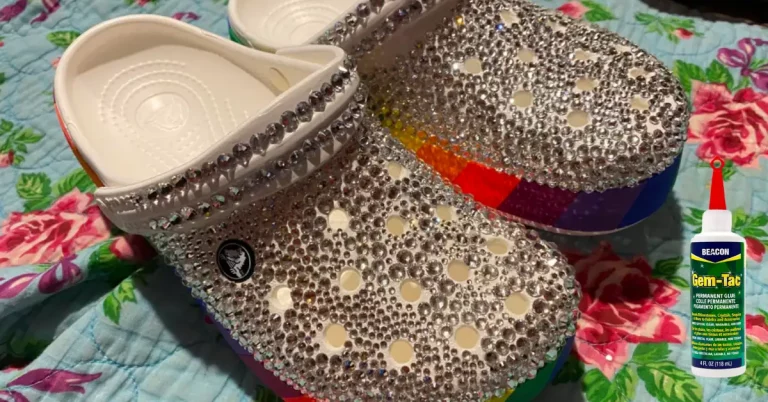The use of epoxy is one of the most popular and effective ways to repair plastic radiators. Based on the type of plastic and severity of the damage, you can decide the best epoxy for you to repair plastic radiators.
There are many epoxy options commonly used to fix plastic radiators. In this article, I will discuss the top 3 best epoxy for plastic radiator repair. Now, Let’s jump into the review and learn more about them.
Read More: Best Epoxy For Plastic Bumper Repair
Note: Among all the excellent products I have highlighted, PC Products PC-7 Epoxy Adhesive Paste is the best epoxy for plastic radiator repair.
PC-7 is not only water-resistant but also capable of withstanding high temperatures, making it perfectly suited for radiator repairs. When fully cured, it offers robust, durable resistance to harsh environments.
Additionally, it possesses strong chemical resistance, crucial for enduring antifreeze and other automotive fluids. Its paste form allows for easy application, filling gaps effectively, and it adheres strongly to plastic, ensuring a reliable, long-lasting repair.
Why Is Epoxy a Better Repair Material for Plastic Radiators?
It is recommended to use epoxy for plastic radiator repairs. The main reason behind that is epoxy provides a high bond strength and is able to withstand high temperatures.
An epoxy is a durable option for plastic radiator reply because it can withstand the stress and pressure of a plastic radiator effectively.
Epoxy is a material that is highly resistant to most chemicals and solvents, which is why it is suitable for use in car engines, where coolant and other chemicals are exposed to it.
After the epoxy has cured, it is possible to sand and paint the repaired area, allowing for a more polished and professional look to the repair.
Because epoxy has a high-temperature resistance, it can be used in an engine for a number of purposes. As epoxy typically sets and cures relatively quickly, it is possible to repair the radiator quickly and put it back into service as soon as possible.
As epoxy provides so many features for plastic radiator repairs, you can use epoxy without any doubt to repair your car’s plastic radiators.
Read More: Best Epoxy For Plastic Gas Tank Repair
Best Epoxy For Plastic Radiator Repair – Top 3 Reviews
There are a lot of epoxy products available in the market for plastic radiator repair. Here, I will show you the best 3 of them. Let’s jump into the review now.
#1. PC Products PC-7 Epoxy Adhesive Paste
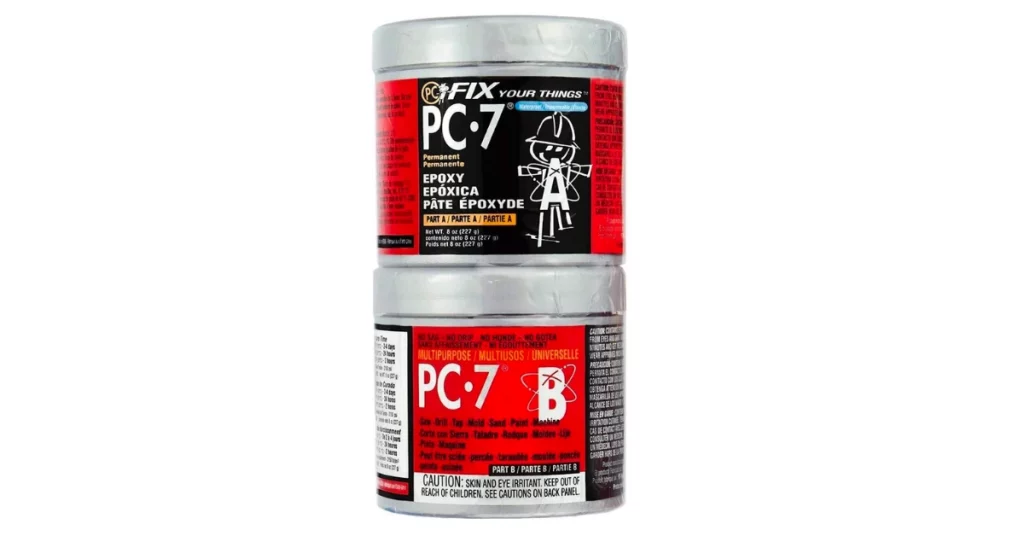
PC Products PC-7 Epoxy Adhesive Paste Specs And Features
| Brand | PC Products |
| Material | Paste |
| Compatible Material | Fiberglass, Brick, Glass, Ceramic, Concrete |
| Color | Dark Gray / Charcoal Gray |
| Working time | 1 hour |
| Cure time | 12-24 hours |
| Strength | 2150 PSI |
| Heat Range | -20°F to 200°F |
PC Products PC-7 Epoxy Adhesive Paste Review
PC Products PC-7 Epoxy Adhesive Paste is a two-part epoxy adhesive paste that can be used indoors and outdoors to bond, seal, and fill.
This adhesive is commonly used for household repairs, automotive repairs, marine repairs, and industrial repairs. Materials such as metal, wood, glass, ceramics, and most plastics can be bonded, filled, and rebuilt with it.
With PC-7 Epoxy Adhesive Paste formulations, extended working time is available for large and critical jobs, allowing the user to reposition work or make adjustments. It also has a tensile strength of 2150 PSI, which creates a strong bond.
Some plastics, wax paper, Teflon, and polyethylene will not bond to PC-7. If you are unsure, test a small area first.
It is resistant to mild acids, caustics, detergents, gasoline, fuel oil, salt, and freshwater. You can apply PC-7 Epoxy Adhesive Paste at a temperature between 35 to 115 degrees Fahrenheit. And it has a service temperature of -20 to +200 degrees Fahrenheit.
Ensure the surface to be bonded is clean and dry before applying PC-7 Epoxy Adhesive Paste. Combine the resin and hardener in equal parts, then apply to one surface and press the parts together for 2 minutes.
It takes 24 hours for the bond to cure. To protect yourself and work in a well-ventilated environment, wear gloves and safety glasses.
PC Products PC-7 Epoxy Adhesive Paste Pros and Cons
Pros
- Easy to use.
- Easy to mix.
- Heavy Duty.
- Withstand temperature -20°F to 200°F.
- Can be painted, sanded, drilled, tapped and filed.
- It can be used as a filler or as an adhesive.
Cons
- The process of mixing it before use can be messy.
#2. J-B Weld 8237 PlasticWeld Plastic Repair Epoxy Putty
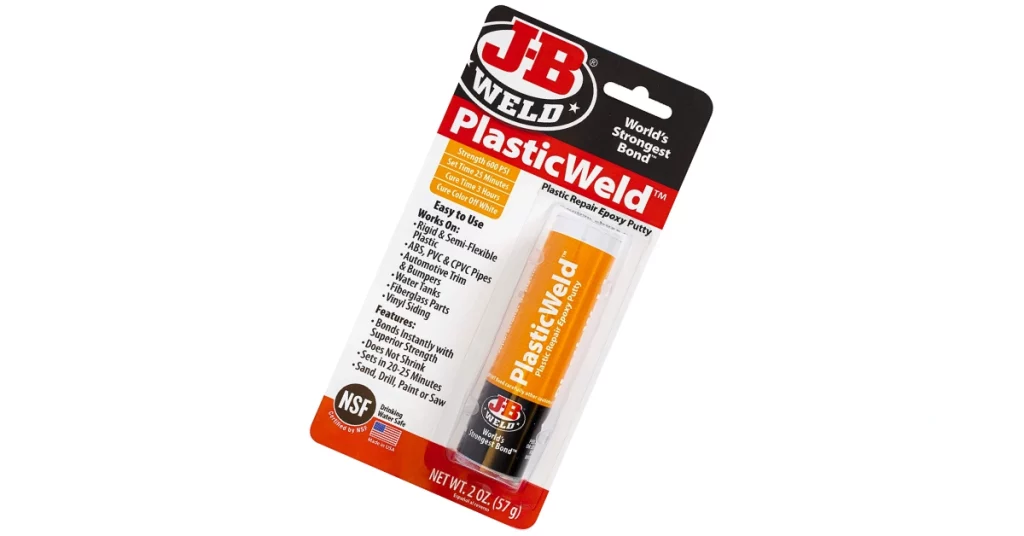
J-B Weld 8237 PlasticWeld Plastic Repair Epoxy Putty Specs And Features
| Brand | J-B Weld |
| Material | Epoxy Resin |
| Compatible Material | Plastic |
| Cure Color | Off-White |
| Tensile Strength | 600 PSI |
| Setting Time | 25 minutes |
| Curing Time | 3 hours |
J-B Weld 8237 PlasticWeld Plastic Repair Epoxy Putty Review
The J-B Weld 8237 PlasticWeld epoxy is considered one of the most reliable and versatile epoxy compounds for bonding and repairing plastic materials. You can sand and paint it after curing, making it a great choice for a variety of repairs. It is a popular option for repairing plastic radiators and other plastic items.
It is a hand-mixable, fast-setting epoxy putty that bonds with most plastics. Upon mixing, a polymer compound is formed, which can be molded or used to repair or build up any plastic item. A variety of plastic compounds can be restored and repaired with this product. This tool can be used to repair and rebuild rigid and semi-flexible plastics.
When PlasticWeld is kneaded by hand, it takes 25 minutes to set and cures after three hours. In J-B Weld PlasticWeld, the set and cure colors are both off-white in color. In terms of lap shear strength, J-B Weld Plasticweld is capable of 600 PSI. The product can withstand continuous temperatures of up to 250°F (121°C) and intermittent temperatures of up to 300°F (148 °C) once it has been fully cured.
It is important to note that PlasticWeld is a material that does not shrink, so it can be molded, shaped, sanded, drilled, and cut to fit a wide range of applications. This adhesive won’t stick to polyethylene and polypropylene. As a first step, you should test for adhesion.
It is designed specifically for DIY plastic repair projects, including PVC, Cpvc pipes, auto bumpers, etc. With NSF certification, Plasticweld is safe for use with potable water.
J-B Weld 8237 PlasticWeld Pros and Cons
Pros
- Simple to use.
- Cost-effective.
- Instantly bonds.
- There will be no shrinkage.
- After curing, it can be drilled, sanded, painted, and tapped.
- Chemical, oil, and fuel resistant.
Cons
- Not all types of plastic will adhere to it.
Read More: JB Weld Tank Weld vs. Steel Stick
#3. Am worldwide Accu-tech 5000 Epoxy Cartridge

Am worldwide Accu-tech 5000 Epoxy Cartridge Specs And Features
| Brand | Am worldwide |
| Material | Epoxy Adhesive |
| Compatible Material | Plastic, Metal |
| Drying time | 5-10 minutes |
Am worldwide Accu-tech 5000 Epoxy Cartridge Review
Am worldwide Accu-tech 5000 epoxy Cartridge is an epoxy adhesive which is easy to use and provides high strength. It provides industrial strength for repairing plastics and many more materials. It is a two-part epoxy adhesive system that is designed for industrial and commercial applications.
The epoxy adhesive takes 5-10 minutes to dry with a heat gun and mixes automatically with the dispensing gun System 5000 by using a patented mixing tip. Applications include aluminum radiator panels, plastic hose connections, drainage pipes, air coolers, plastics, and aluminum tanks.
Accu-Tech 5000 Epoxy Cartridge is a high-performance epoxy system that is designed for quick curing and strong bonding. A static mixing nozzle attached to the cartridge mixes resin and hardener together in the two-part system. In this way, a consistent mix ratio can be achieved and the application process can be made easier and more efficient.
Am worldwide Accu-tech 5000 Epoxy Cartridge Pros and Cons
Pros
- Easy to use.
- Repairs with industrial strength
- Quickly cures
- Can use with dispensing gun
- Repairs, plastic tanks, charge air coolers, and more.
Cons
- Compared to other options, it may be more expensive.
How To Identify Damage in Plastic Radiators
There are many steps to identify damages in a plastic radiator. Here are some tips to identify them:
- Make sure there is no coolant or oil leaking under the vehicle, and inspect the radiator for cracks or holes.
- The radiator system may be leaking water if you have wet spots on the floor.
- Symptoms of coolant leaks under the hood may include steam or smoke from damaged radiators.
- Make sure there are no cracks or holes in the pipes and fittings.
- It is not necessary to replace the entire radiator if only certain parts are cracked and damaged.
How To Choose The Best Epoxy For Plastic Radiator Repair
Few things you need to look at when buying an epoxy for plastic radiator repair. Here are a few key factors to consider:
1. Temperature Resistance
Radiators are constantly exposed to high temperatures, so epoxy with low temperature tolerance can melt or bend, posing a potentially life-threatening fire risk. So, make sure the epoxy can withstand your car’s temperature.
2. Bonding Strength
The bonding strength of the repaired surface determines how much impact it can withstand. An epoxy with a high bond strength will be able to withstand the radiator’s stress and pressure.
3. Water And Chemical Resistance
It is important to use epoxy that is resistant to water and chemicals in order to ensure a safe repair. If the repaired layer is wet, a waterproof epoxy will prevent it from falling apart. Epoxy should be resistant to chemicals and solvents as the radiator is constantly exposed to coolants and chemicals.
4. Set, Fixture, And Cure Time
Epoxy adhesives are classified according to their set time, fixture time, and cure time. When purchasing epoxy, it is important to ensure that these factors are balanced to your advantage.
5. Compatibility
Make sure your radiator’s plastic is compatible with the epoxy. All epoxies do not work on all plastics. You should also check whether or not you can sand and paint the epoxy after it has cured.
How To Fix Plastic Radiator Leak With Epoxy
When you are done with finding the leaks or damages in the plastic radiator and already buy the epoxy. Then you are ready to start fixing the plastic radiator by following some simple steps:
- Prepare The Area: Ensure there is no more coolant in the radiator. Then clean the area around the leak with a rag and brake cleaner.
- Choose The Right Epoxy: You should buy the epoxy needed to repair your leaks perfectly. Follow the instructions written on the package.
- Apply The Epoxy: Spread the epoxy over the leak thoroughly with the applicator or a putty knife. Make sure it covers the leak perfectly.
- Wait For the Epoxy to Cure: Following the manufacturer’s instructions, allow the epoxy to cure. Depending on the product, you may need to wait anywhere from a couple of minutes to several hours.
- Check the Repair: Make sure that the repair is holding. Reapply epoxy if the repair does not hold. You may sand and paint after the epoxy has cured.
Can You Repair Radiator Cracks?
In a nutshell, the answer to this question is yes. The only thing that needs to be done is to locate the cracked area, clean the radiator correctly, and then patch the leaking area using epoxy.
Are Plastic Radiators Any Good?
Compared to metal radiators, plastic radiators only have one real advantage: they are lighter and less expensive. Most people are concerned about price, so it is perfectly understandable if you wish to choose a less expensive option.
Last Opinion
For many reasons, epoxy is considered to be a better repair material for plastic radiators than other materials. I tried to help you find the best epoxy for plastic radiator repair.
Hopefully, now you can choose the best option for you without any doubt in mind. Leave a comment below if you like this article.

